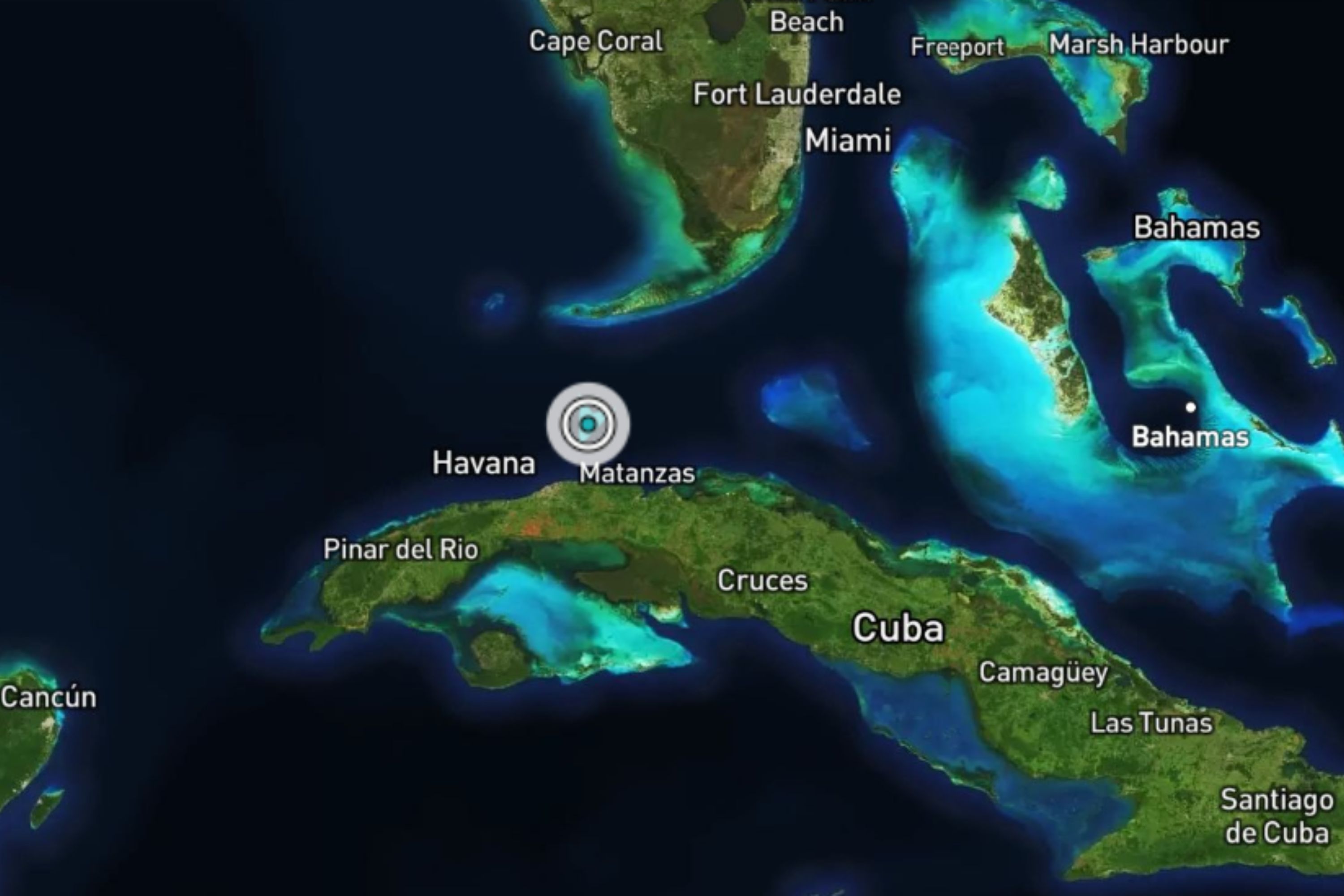In something straight out of an H.P. Lovecraft horror story, a terrifying deep-sea squid has been filmed latching on to a camera over half a mile under the ocean's surface.
The creature, which was determined to be a deep-sea squid from the species Taningia danae—also known as the Dana octopus squid—was spotted at around 3,366 feet deep.
The footage was captured on a free-fall baited camera belonging to researchers from the University of Western Australia (UWA) and Kelpie Geosciences in the U.K. The camera was falling to the seafloor at around 190 feet per minute.

"We captured this footage just north of the Samoan Passage in the South Pacific, at 1,026 m [3,366 feet] depth, a few days ago," Jess Kolbusz, a researcher at the Minderoo-UWA Deep Sea Research Center, can be heard saying in the video footage. "We've also approximated that the squid is approximately 75 cm [29.5 inches] in length."
The Samoan Passage is an ocean trench in the mid-Pacific, near the island country of Samoa and American Samoa. Researchers dropped baited cameras to the ocean floor just north of this area to attract sea life and get a glimpse of the species hidden beneath the waves.
"As we were reviewing the footage, we realised we had captured something very rare," said Heather Stewart, an adjunct professor at UWA and a member of Kelpie Geosciences, in a statement.
"The squid, which was about [29½ inches] long, descended on our camera assuming it was prey, and tried to startle it with its huge bioluminescent headlights. It then proceeded to wrap its arms around one of the other cameras which in turn captured the encounter in even greater detail. I think we were very lucky to have witnessed this."
The Dana octopus squid is one of the largest squid species found in the deep ocean, reaching up to 7½ feet. It is found at considerable depths, up to around 4,000 feet below the ocean surface. It feeds on a variety of marine organisms, including fish and smaller squids, and is in turn eaten by such predators as sperm whales.
This species is famed for having two very large photophores on the end of two of its arms, around the size of lemons. They are the largest known photophores in the natural world. These photophores are used to produce bright bioluminescent flashes, designed to disorient prey as well as for communication and attracting mates.
"You can now clearly see the large photophores in the tips of its two arms that produce bioluminescence," Kolbusz said in the video. "Most importantly, these are the largest known photophores in the natural world, and it's great to have been able to capture this in two points of view as it interacts with the lander."
"We're so incredibly excited to have been able to capture a video of this squid," she said.
This squid has not been observed in the wild very often, so this discovery is a rare and exciting event for the researchers.
"Many records of this species are from strandings, accidental bycatch or from the stomach contents of whales," said Alan Jamieson, director of the Minderoo-UWA Deep Sea Research Center, in the statement.
"The rarity of live observations of these amazing animals makes every encounter valuable in gathering information on geographic locations, depth, and behaviour, plus it is such a unique animal that we hardly ever get to see, so we had to share it," he said.
The researchers are in the last few weeks of their three-month-long expedition aboard the research ship RV Dago, and they hope to find more secrets of the deep before they return to dry land.
Do you have a tip on a science story that Newsweek should be covering? Do you have a question about squid? Let us know via science@newsweek.com.
Uncommon Knowledge
Newsweek is committed to challenging conventional wisdom and finding connections in the search for common ground.
Newsweek is committed to challenging conventional wisdom and finding connections in the search for common ground.
About the writer
Jess Thomson is a Newsweek Science Reporter based in London UK. Her focus is reporting on science, technology and healthcare. ... Read more





